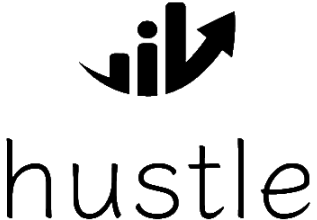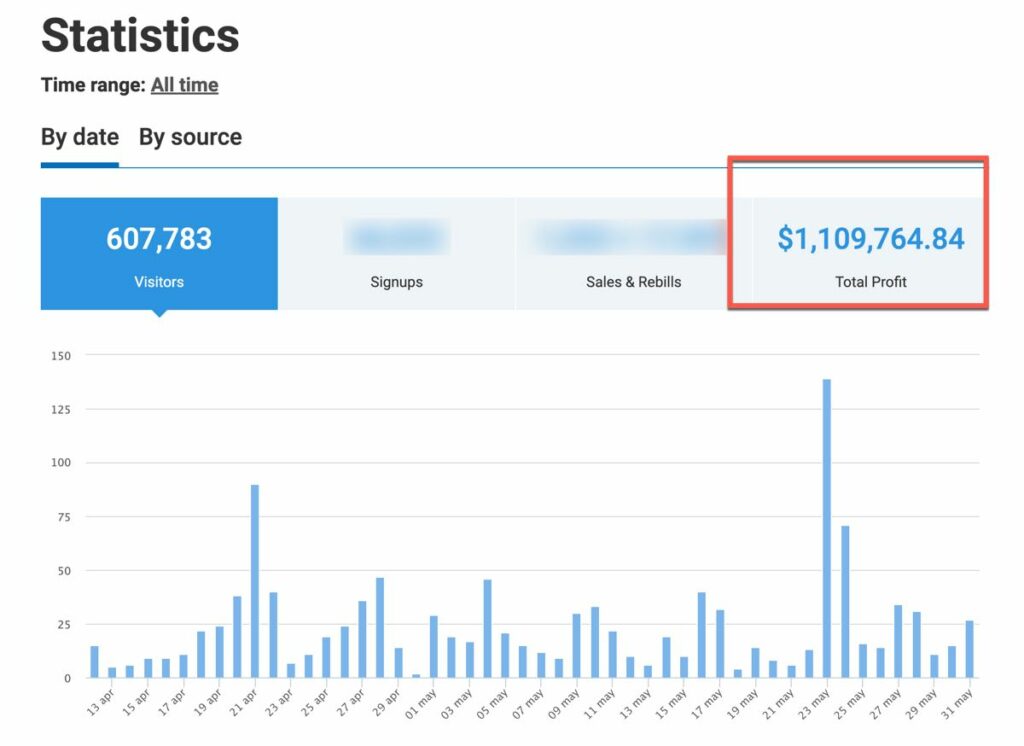As we delve into the dynamic world of blogging in 2024, it’s essential to understand the nuances of creating, branding, and monetizing your blog. Whether you’re a seasoned writer or a newcomer to the scene, the potential for making money through blogging is substantial. In this guide, we’ll navigate the process of starting a successful blog, from selecting the perfect niche to implementing effective monetization strategies. Let’s embark on this exciting journey and transform your passion for blogging into a profitable venture.
Key Takeaways
- Identify a profitable niche to create targeted and valuable content for a specific audience, enhancing your blog’s potential for success.
- Choose a domain name and hosting service that align with your brand identity, and select a blogging platform that suits your technical skills and goals.
- Develop a unique brand and incorporate multimedia elements to craft engaging posts that captivate and retain readers.
- Implement various monetization methods such as advertising, affiliate marketing, and selling digital products to diversify income streams.
- Utilize SEO techniques, social media marketing, and collaborations to grow your audience, while regularly analyzing and optimizing your blog’s performance for long-term success.
Laying the Foundation: Starting Your Blogging Journey

Identifying Your Niche: The Key to Targeted Content
Identifying your niche is the cornerstone of a successful blogging journey. It’s about finding the sweet spot where your passions, expertise, and a market need intersect. Your niche determines the focus of your blog and is instrumental in attracting a dedicated audience. Here’s a simple approach to finding your niche:
- Reflect on your interests and areas of knowledge.
- Research the market demand for topics within those areas.
- Consider the competition and look for gaps you can fill.
By honing in on a specific niche, you create a unique value proposition for your readers.
Once you’ve pinpointed your niche, it’s crucial to understand your target audience. This will guide the tone, style, and content of your blog posts, ensuring they resonate with your readers. Crafting a simple tagline, such as ‘Executive coaching for new managers’ or ‘Health advice for new moms’, can encapsulate your niche and mission. Remember, a well-defined niche can lead to a profitable blogging career, as it allows you to create targeted and compelling content.
Selecting a Domain Name and Hosting Service
Choosing the right domain name is a crucial step in establishing your online presence. Your domain name should be memorable, relevant to your content, and easy to spell. Once you’ve brainstormed a list of potential names, use services like Google Domains, Name.com, HostGator, or Namecheap to check availability. Prices vary, with options like Namecheap being the most affordable.
When selecting a hosting service, consider factors such as uptime percentage, speed, security features, and customer support. Many hosting providers offer tiered pricing plans, so select one that aligns with your needs and budget. Remember to add domain privacy during checkout to protect your personal information, usually available for a small additional fee.
It’s essential to pick a unique and brandable domain name. If you’re struggling to decide, utilize a domain name generator for inspiration or opt to choose a free domain later if your hosting service allows it.
Finally, complete the registration process for your chosen domain name and proceed to book it by following the steps provided by the domain registrar. This will secure your online identity and lay the groundwork for your blogging journey.
Choosing the Right Blogging Platform for Your Needs
Once you’ve pinpointed your niche, the next pivotal step is selecting the ideal blogging platform. Your choice here can significantly influence your blog’s potential for growth and monetization. There are two primary types of platforms to consider: self-hosted and hosted.
Self-hosted platforms require you to obtain a hosting provider. They offer greater flexibility and control, allowing you to build your blog on a content management system (CMS) like WordPress, which is renowned for its ease of use and extensive features. On the other hand, hosted platforms provide a more user-friendly, drag-and-drop experience, ideal for beginners.
While hosted platforms might seem convenient, they often come with limitations that could hinder your blog’s long-term scalability.
It’s crucial to weigh the pros and cons of each platform. Here’s a quick comparison to help you decide:
- Self-hosted platforms: Greater customization, full ownership, but requires technical know-how.
- Hosted platforms: User-friendly, less maintenance, but with potential restrictions.
Remember, the best blogging site of 2024, as highlighted by TechRadar, includes top picks like Wix, WordPress, and Blogger. Each platform has its strengths, and your choice should align with your blogging goals and technical proficiency.
Content Creation and Branding Strategies

Crafting Engaging and Valuable Content
To captivate your audience and keep them coming back for more, crafting engaging and valuable content is paramount. Start by ensuring your blog posts are comprehensive enough to answer your readers’ questions. Aim for a minimum of 1,500 words, but don’t shy away from going up to 5,000 words if the topic demands depth.
Make your posts interactive and fun to read. Use infographics, allow comments, and encourage sharing to build a community around your content.
Remember to make your content evergreen, so it remains relevant for years to come. Catchy headlines and conversational language can make a significant difference in drawing readers in and keeping them engaged. Keep your paragraphs short to maintain readability.
Lastly, don’t forget to show your personality. Whether it’s through anecdotes or a casual tone, letting your readers see the person behind the words helps build trust and a stronger connection.
Developing a Unique Brand Identity
Developing a unique brand identity is crucial for standing out in the crowded blogosphere of 2024. Your brand is the embodiment of your blog’s personality, values, and aesthetics, and it’s what makes your blog memorable to your audience. Start by defining your blog’s mission and vision, which will guide the visual and narrative elements of your brand.
To create a cohesive brand identity, consider the following elements:
- Logo: A distinctive logo that represents your blog’s ethos.
- Color Scheme: A set of colors that reflects your brand’s mood and tone.
- Typography: Carefully selected fonts that convey the right message.
- Imagery: Consistent use of images that align with your brand’s narrative.
Remember, consistency is key. Every aspect of your blog should be infused with your brand’s identity, from the blog design to the content you publish. This consistency helps to build trust and recognition with your audience.
When selecting a theme for your blog, aim for one that aligns with your brand and appeals to your target audience. The theme should be professional and easy to navigate, enhancing the user experience and encouraging engagement. As your blog evolves, don’t be afraid to refine your brand identity to stay relevant and resonate with your readers.
Utilizing Multimedia to Enhance Blog Posts
Incorporating multimedia into your blog posts is not just about aesthetics; it’s a strategic move to increase engagement and retention. Images, videos, and interactive elements can significantly boost the time readers spend on your page.
- Use high-quality, relevant images to add visual appeal and support your content.
- Embed videos to provide in-depth explanations or demonstrations related to your blog topic.
- Include infographics or charts to present complex data in an easily digestible format.
Remember, multimedia should complement your writing, not overshadow it. Aim for a balance that enriches the reader’s experience without distracting from your message.
It’s essential to ensure that all multimedia elements are optimized for fast loading times, as this impacts both user experience and SEO rankings. Additionally, always use royalty-free or properly licensed media to avoid legal issues.
Monetization Methods for Your Blog

Exploring Advertising and Sponsored Content
Advertising and sponsored content are pivotal in turning your blog into a profitable venture. Companies are willing to pay for exposure to your audience, especially if your blog garners a loyal and engaged readership. There are several ways to incorporate advertising into your blog:
- Display Ads: These are visual banners placed in strategic locations on your site, like the sidebar or header.
- Native Ads: Advertisements that are designed to blend in with your blog’s content, making them less obtrusive.
- Podcast Ads: If your blog includes a podcast, selling audio ad spots can be lucrative.
Sponsored content involves creating posts that feature a brand or product. This symbiotic relationship benefits both you and the advertiser, as it provides value to your readers while generating income.
Native advertising offers a subtler approach, integrating promotional messages that match the style and tone of your regular content. This method respects your audience’s experience while still contributing to your blog’s revenue. Remember, transparency with your audience about sponsored content is crucial to maintain trust.
Leveraging Affiliate Marketing
Affiliate marketing is a powerful tool for bloggers looking to monetize their platform. By promoting products or services and earning a commission on sales through unique affiliate links, bloggers can generate a significant income stream. Choosing the right products that resonate with your audience is crucial to the success of your affiliate marketing strategy.
- Align your offerings with your blog’s niche and audience interests.
- Provide value-oriented content that naturally introduces affiliate products.
- Manage your affiliate links effectively, using tools like ThirstyAffiliates.
Remember, the goal is not just to sell but to add value for your readers. Trust is paramount; recommending products that you genuinely believe in will help maintain the integrity of your blog and the trust of your audience.
While income from affiliate marketing can be inconsistent, with the right approach, it can be a substantial part of your blog’s revenue. Start by exploring popular affiliate programs such as Amazon or Aliexpress, and consider products you already use and love for potential partnerships.
Offering Digital Products or Services
Selling digital products is a lucrative way to monetize your blog. Digital products are downloadable assets that can be sold to a wide audience without the need for physical inventory. Examples of digital products include planners, eBooks, stock photos, and recorded workshops. These items can be easily integrated into your blog and sold directly to your readers.
To successfully sell digital products, you must create demand. One effective strategy is to collect pre-orders, which can help gauge interest before fully committing to product development. Additionally, consider the price point of your digital products; while they are often sold at a lower cost, with a large enough audience, they can become a significant income stream.
Offering digital products or services requires a blend of creativity, marketing savvy, and an understanding of your audience’s needs. It’s about finding the right balance between value and profitability.
Remember, the key to success lies not just in the products you offer, but also in how you present and market them to your audience. A well-executed digital product offering can transform your blog into a powerful revenue-generating platform.
Growing Your Blog Audience

Effective SEO Techniques for Bloggers
To ensure your blog stands out in the crowded digital landscape of 2024, mastering SEO techniques is crucial. Start by making your blog searchable; use tools like Google Webmasters and Yoast SEO to optimize for search engines. Focus on finding and promoting relevant keywords to increase organic traffic.
- Implement evergreen content that remains relevant and valuable over time.
- Craft catchy headlines that grab attention and promise value.
- Write in a conversational tone, using ‘I’ and ‘you’ to engage readers.
- Keep paragraphs short to enhance readability.
Understanding and implementing a long-term SEO strategy from the outset can save countless hours in the future. It’s essential to build a solid foundation that supports ongoing optimization efforts.
Further reading guides offer a wealth of knowledge for bloggers looking to deepen their SEO understanding. Dive into resources like ‘13 Advanced SEO Techniques & Strategies for 2024 – Semrush‘ to stay ahead of the curve.
Social Media Marketing and Community Engagement
In the dynamic landscape of social media, understanding the interplay between different platforms is crucial for a blogger’s success. As per insights from Semrush, it’s not about prioritizing one platform over another, but rather about comprehending their relationships to each other to enhance your content and strategy.
- Identify the social media sites your target audience frequents and align them with your niche.
- Start with a manageable number of platforms, focusing on where your audience is most active.
- Engage with your audience by creating a Facebook group or email list for updates and community building.
Embrace the power of video content on platforms like Facebook, Instagram, YouTube, or TikTok to gain significant traction.
Remember, social media is not just about broadcasting your content; it’s about fostering a community. Encourage interactions by sharing on profiles, pages, and groups, and invite feedback through comments. Collaborating with influencers and fellow bloggers can also amplify your reach and bring your blog to new, relevant audiences.
Collaborating with Other Bloggers and Influencers
Collaborating with other bloggers and influencers can be a powerful strategy to expand your reach and grow your audience. It’s essential to understand their audience and ensure that there’s a good fit between their followers and your content. Start by engaging with potential collaborators on social media platforms like Twitter, sharing their content, and making your presence known.
Building a relationship with fellow bloggers and influencers can lead to opportunities such as guest posting, which can introduce your blog to a new audience.
When considering collaborations, it’s also beneficial to explore sponsored content opportunities. This can be a win-win situation where you can promote a brand while generating revenue for your blog. Use tools like Ahrefs Content Explorer and BuzzSumo to find influencers, or platforms like Tap Influence to connect with brands interested in sponsored posts.
Remember, the key to successful collaboration is mutual benefit. Ensure that any partnership you enter into provides value to both parties involved.
Analyzing and Optimizing Your Blog’s Performance

Tracking Metrics with Analytics Tools
Understanding your blog’s performance is crucial, and analytics tools are indispensable for this task. They provide insights into visitor behavior, traffic sources, and content engagement. To get started, create a Google Analytics account and install the tracking code on your blog. This will enable you to monitor key metrics and make data-driven decisions.
Analytics tools vary in complexity and features. Here’s a list of some of the best tools for 2024:
- Google Analytics
- Matomo
- Tableau
- Momently
- HubSpot Marketing Hub
- SEMrush
- Google Search Console
- Clearscope
It’s essential to regularly review your analytics data to understand what content resonates with your audience and to identify areas for improvement.
By leveraging these tools, you can gain a comprehensive view of your blog’s performance, from page views and bounce rates to conversion tracking. This information is vital for optimizing your content strategy and enhancing user experience.
A/B Testing for Improved User Experience
A/B testing is a critical tool for bloggers aiming to optimize their site’s user experience. By comparing two versions of a webpage, you can determine which elements resonate best with your audience. Implementing A/B testing can lead to higher engagement and conversion rates.
When conducting A/B tests, focus on one variable at a time to accurately measure its impact. This could be anything from the color of a call-to-action button to the layout of your content.
Here’s a simple process to follow:
- Identify the element you want to test.
- Create two versions: the original (A) and the modified (B).
- Use analytics tools to split your traffic between both versions.
- Collect data on user behavior for each version.
- Analyze the results to see which version performed better.
Remember, A/B testing is not a one-time task but an ongoing process. Regular testing and tweaking can help you stay ahead of user preferences and industry trends.
Adapting to Trends and Feedback for Long-Term Success
In the ever-evolving landscape of blogging, adapting to trends and feedback is crucial for long-term success. Staying abreast of the latest developments within your niche and the broader digital world can help you maintain relevance and engagement with your audience.
By incorporating new trends into your content and responding to user feedback, you create a dynamic blog that grows with its readership.
Here are some steps to ensure you’re adapting effectively:
- Regularly review your blog analytics to identify popular topics and areas for improvement.
- Engage with your audience through comments, surveys, and social media to gather feedback.
- Update older posts with new information to keep them current and valuable.
- Experiment with new content formats and digital products to meet the changing needs of your audience.
Remember, the key to monetizing your blog is to offer unique value that can’t be found elsewhere. Whether it’s through exclusive resources, insightful newsletters, or innovative digital products, providing content that resonates with your audience will foster loyalty and drive revenue.
Conclusion
Embarking on the blogging journey in 2024 offers an exciting avenue for creativity and income generation. As we’ve explored, the key to a successful blog lies in selecting a profitable niche, understanding your audience, and leveraging the right monetization strategies. Remember, consistency and quality content are the cornerstones of any thriving blog. With dedication and the step-by-step guidance provided, you’re well-equipped to build a blog that not only reflects your passion but also brings financial rewards. Stay patient, stay persistent, and let your blog be the gateway to your financial freedom.
Frequently Asked Questions
How do I identify a profitable niche for my blog in 2024?
To identify a profitable niche, research current trends, identify your interests and expertise, and assess the market demand. Look for topics with a dedicated audience but not oversaturated with competitors.
What are the best blogging platforms to use in 2024?
The best blogging platforms in 2024 include WordPress, Medium, and Substack. Choose one that aligns with your technical skills, customization needs, and audience preferences.
What content strategies should I use to engage my audience?
Create valuable and relevant content, use multimedia like images and videos to enhance posts, and maintain a consistent publishing schedule to keep your audience engaged.
How can I monetize my blog effectively in 2024?
Monetize your blog through advertising, sponsored content, affiliate marketing, and selling digital products or services. Choose methods that align with your content and audience’s interests.
What are effective ways to grow my blog’s audience?
Employ SEO techniques, engage with your audience on social media, collaborate with influencers, and create high-quality content to organically grow your blog’s audience.
How do I track and optimize my blog’s performance?
Use analytics tools to track metrics such as traffic, engagement, and conversion rates. Conduct A/B testing to improve user experience and adapt content based on trends and feedback.








1 thought on “How to start blogging in 2024 (make money through it)A Step-by-step beginner guide”